READY TO GET STARTED?
REQUEST A FREE ESTIMATE
Fill out the form below or call (888) 466-7849 for a free, no-obligation estimate.
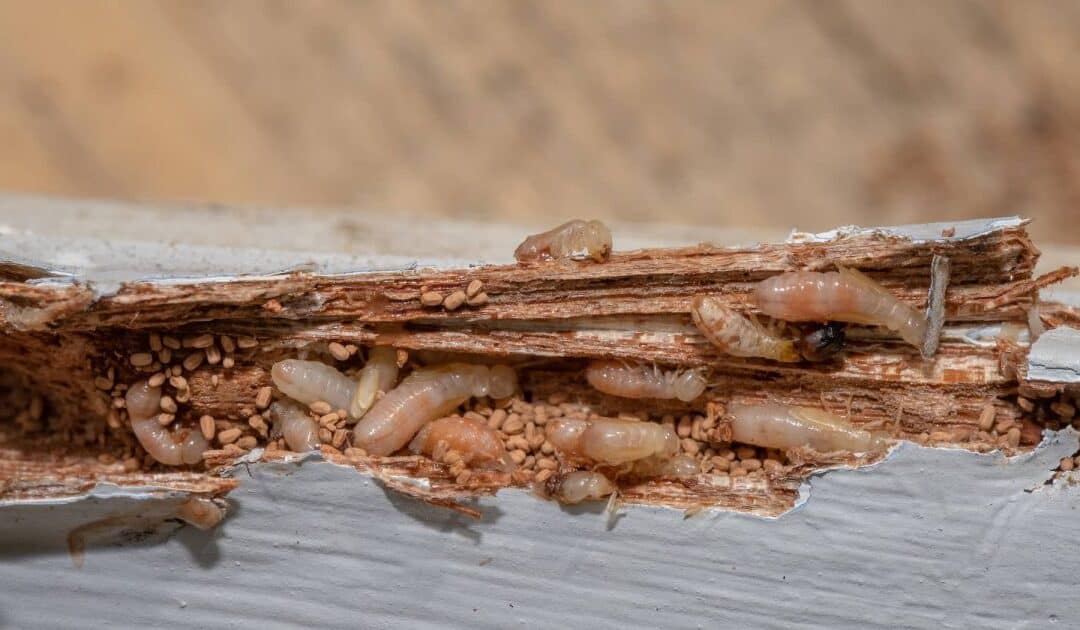
Miami’s warm, humid climate makes it a hotspot for drywood termites. These pests, living entirely within wood, can cause significant damage if left untreated. Unlike subterranean termites, they don’t need soil, making infestations harder to detect. Here’s how to protect your Miami home with effective, eco-conscious treatments and prevention tips from termite control near me.
For severe infestations, fumigation is a reliable solution. Professionals tent the home and release a gas that penetrates wood to eliminate termites. This treatment leaves no residue behind making this option much healthier for the environment.
No-tent treatment is a less invasive and eco-friendlier solution for smaller infestations. It uses non-repellent products, often derived by adhering to sustainable practices, which target termites directly without affecting other species. This precise application minimizes chemical use while effectively eliminating colonies.
Preventing termites isn’t just about keeping your home protected; it’s also an opportunity to adopt greener practices that help the environment. Here are some tips for keeping drywood termites at bay while staying eco-conscious:
Drywood termites can cause costly damage, but with quick action and the right choices, you can protect your home. Contact a Miami-based termite control expert for professional inspections and effective treatments. With proven prevention strategies and reliable solutions, you can safeguard your home and enjoy peace of mind for years to come with termite control near me.
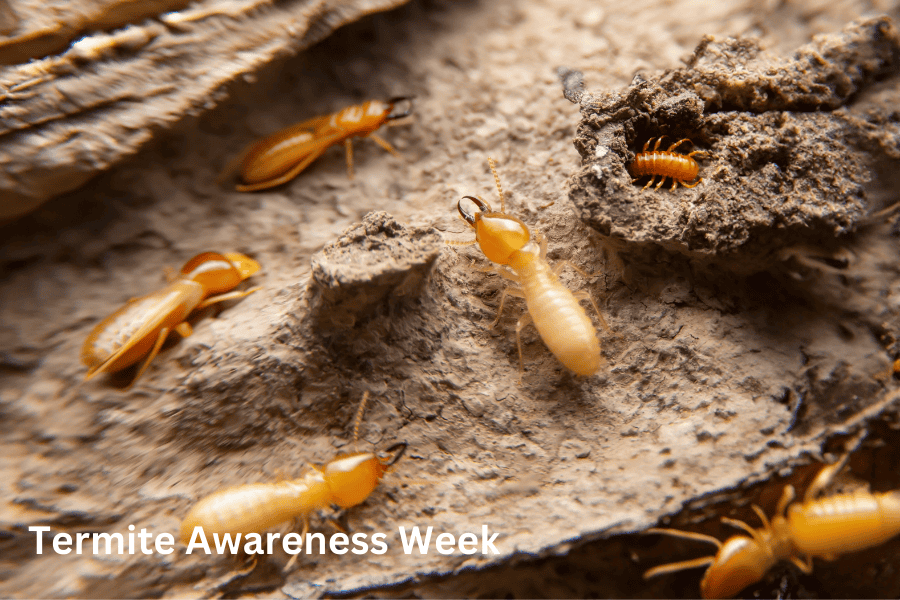
Termites may be small, but their destructive power is anything but. Each year, these silent invaders cause billions in property damage, and in Bonita Springs, Florida—a place where the warm, humid climate is a perfect breeding ground for termites—preventing these pests is crucial for homeowners, making eco-friendly termite control a priority for Florida homeowners.
This Termite Week, we’re spotlighting sustainable, eco-friendly termite control methods that not only protect your property but also protect the environment. Traditional treatments often rely on harsh chemicals that can harm both human health and local ecosystems. Thankfully, green termite control offers a smarter, healthier way to eliminate these pests. If you’re looking for environmentally conscious ways to protect your home, this guide covers effective green solutions for termite control.
Bonita Springs may be known for its sunny skies and beautiful beaches, but it’s also a prime location for termite infestations. The tropical climate and abundant wood sources make it a haven for both subterranean and drywood termites. Here’s why termites pose such a threat:
Understanding their behavior and acting quickly is key to preventing these hidden threats.
While traditional methods—like chemical pesticides—are effective at eliminating termites, they can also harm the environment. These chemicals can seep into the soil, affecting beneficial insects, plants, and even water sources. Fortunately, eco-friendly termite solutions are making it possible to control termites without resorting to harmful chemicals.
Eco-friendly termite control options are gaining popularity for their effectiveness and sustainability. Here’s how you can combat termites the green way:
Baiting systems strategically place stations around your home, containing growth regulators that termites carry back to the colony, eliminating them at the source.
Why it’s green: Minimal chemical use and focused, targeted treatment for insects that shed their exoskeleton.
Installing physical barriers such as sand or steel mesh around your home prevents subterranean termites from gaining access.
Why it’s green: Long-lasting protection without chemicals.
Boric acid disrupts termites’ digestive systems, effectively eliminating them.
Why it’s green: Low toxicity and can be directly applied without harming other organisms.
Orange oil, derived from orange peels, disrupts termites’ respiratory systems and prevents them from laying eggs.
Why it’s green: Plant-based, biodegradable, and effective for localized infestations.
Green termite control doesn’t end with treatment. Regular inspections are vital for early detection. Pest control professionals use non-invasive methods . Ongoing monitoring systems can also be set up to track termite activity throughout the year, ensuring long-term protection.
Prevention is key to avoiding termite infestations. Here are simple ways to reduce the likelihood of attracting termites:
Termites don’t have to threaten your home or your environmental values. Eco-friendly termite control methods offer a sustainable solution that’s effective in keeping your home guarded from these destructive pests.
This Termite Week, take action to protect your home with green termite control practices. Reach out to a local pest control professional who specializes in sustainable solutions and protect your home while keeping the environment intact.

With rising temperatures and changing climate patterns, termites are becoming a growing threat to homes in Bonita Springs. In 2025, it’s more important than ever to adopt proactive measures to prevent infestations before termite swarms take over. This guide will cover smart technology, eco-friendly solutions, and effective termite prevention tactics to protect your home while staying green.
Climate changes have made Bonita Springs an ideal environment for termites, especially subterranean species like the aggressive Formosan termite. Warmer winters and increased rainfall mean longer breeding seasons and more frequent swarms. Early detection and action are key to preventing structural damage from these wood-eating pests.
Eco-conscious homeowners can opt for natural, non-toxic solutions to manage termite threats. Organic baits, cedar mulch, and essential oils create a pest-repelling environment without harming the ecosystem. Borate-based treatments protect wood without the need for harsh chemicals, making it a healthier choice for families, pets, and the environment.
Physical barriers, such as stainless-steel mesh and termite shields, are becoming the go-to for long-term termite protection. These systems block termites from accessing your home, offering durable, chemical-free protection that doesn’t require frequent reapplication. They’re a great complement to other eco-friendly strategies.
Moisture-rich areas are a magnet for termites. Ensuring proper drainage and maintaining dry, well-ventilated spaces will reduce the risk of an infestation. Regular inspections by professional pest control services are essential to catch early signs of termite activity, especially for homes at higher risk due to moisture or structural vulnerabilities.
While DIY efforts can help, professional termite control services are vital for thorough prevention. Pest control experts can offer tailored solutions, including eco-friendly treatments and physical barriers, ensuring comprehensive protection. Their experience helps identify hidden vulnerabilities and prevent costly repairs.
Termite damage can be expensive to repair, often requiring wood replacement and structural reinforcement. Since most homeowners’ insurance doesn’t cover termite-related damage, investing in prevention now can save you significant costs down the line.
The future of termite management lies in sustainable, long-term solutions. By combining eco-friendly treatments, smart technology, and preventative barriers, homeowners can protect their properties while minimizing their environmental impact. Staying informed about the latest pest control strategies and committing to sustainable practices will ensure lasting protection against termites.
Termite prevention is crucial for Bonita Springs homeowners in 2025. With the increasing threats posed by climate change and termite adaptation, staying proactive with eco-friendly methods, smart technology, and is essential. By adopting these strategies, you can protect your home and enjoy peace of mind, knowing your property is protected from costly termite damage.
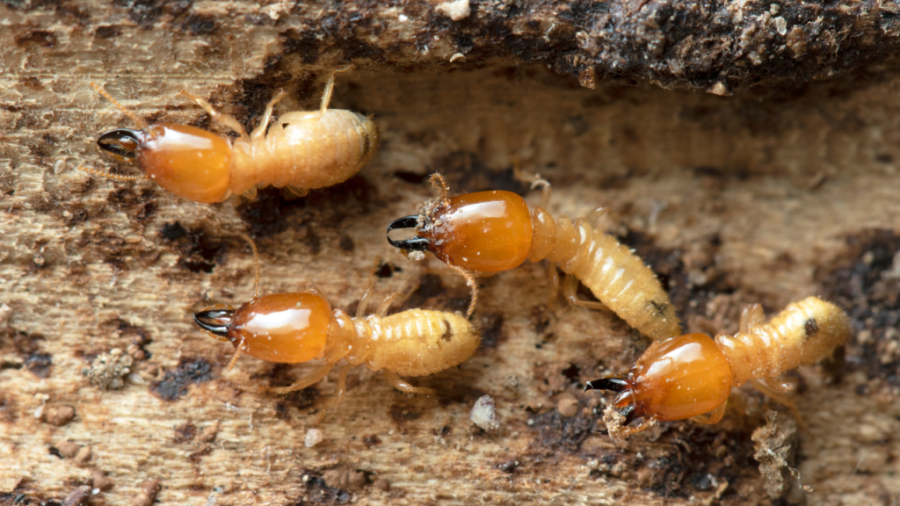
As a homeowner in Fort Myers, you’re no stranger to the warmth and humidity that create the perfect breeding ground for termites. These pests may seem harmless at first, but they can cause devastating damage to your home if left unchecked. In fact, termites are responsible for billions of dollars in property damage each year across the U.S. — and Florida is one of the most affected states. Here’s why termite prevention should be a top priority for any Fort Myers homeowner.
Your home is likely the largest investment you’ll ever make. Termites can silently and steadily eat away at the wood structure of your home, causing costly damage before you even realize there’s a problem. Preventative measures, like annual inspections and professional treatments, can save you from a costly and stressful repair bill down the road.
Fort Myers’ tropical climate is ideal for termites, especially the destructive subterranean variety. The moisture in the air and the warm temperatures year-round provide the perfect environment for termites to thrive. Without proper prevention, you’re putting your home at a higher risk of infestation.
Treating an existing termite infestation can cost thousands of dollars, especially if structural repairs are needed. Preventing termites before they invade your home is far more affordable and less disruptive. Routine inspections by a pest control expert can identify signs of termite activity early and help stop infestations before they get out of hand.
Termites target wood, and that’s exactly what your home’s frame is made of. Over time, even a small infestation can weaken the structure of your home, leading to expensive repairs or even unsafe living conditions. Regular treatment and monitoring give you peace of mind, knowing that your home’s foundation is secure.
The key to effective termite control is early detection. If termites are caught in the early stages, they are much easier—and cheaper—to eliminate. Professional pest control companies use the latest technology such as Sentricon to spot termite activity even before it becomes visible to the untrained eye.
In Fort Myers, termite prevention is not just a good idea—it’s a necessity. With the right precautions in place, you can protect your home from these destructive pests and avoid the high costs associated with repairs. Don’t wait until it’s too late—schedule an inspection today and take the first step toward protecting your home from termites.
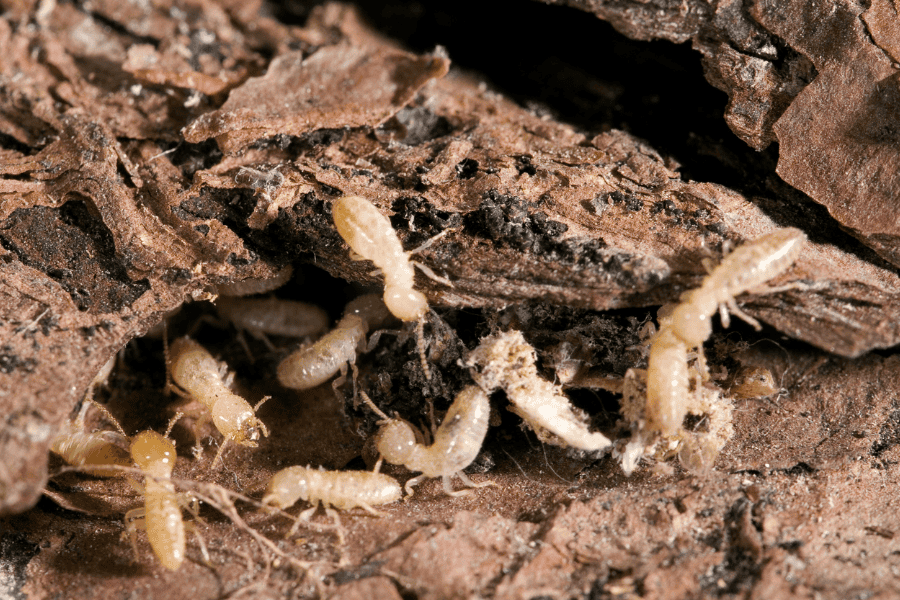
Subterranean termites can be a serious threat to homes in Florida, but with the right treatments, you can eliminate these pests and protect your property from future infestations. Check our guide to the most effective termite treatment options.
Liquid soil treatments are one of the most common and effective ways to protect your home from subterranean termites. A termite professional will apply a liquid termiticide around the foundation of your home, creating a barrier in which termites can cross and pick up the liquid termiticide product. They’ll then pass the termiticide product to the rest of the colony. This treatment not only eliminates termites that come in contact with the termiticide but also deters others from entering your home.
Baiting systems, such as the Sentricon®️ Always Active Bait System, involve placing bait stations around your property, especially in areas where termites are likely to be seeking a food source. The bait within the system will contain a slow-acting termiticide that termites bring back to their colony, eventually eliminating the entire colony. This process is known to be less disruptive than other traditional termite control options and is effective for both eliminating existing infestations and preventing new ones.
Wood treatments involve applying a termiticide directly to the wood in your home. This can be done during the construction phase or as a spot treatment in areas where termites have been detected. Wood treatments can protect your home by making the wood unattractive to termites.
It’s always important to have regular inspections by a professional termite control company to ensure termite activity is caught early. Professionals will be able to prevent devastating infestations by catching and eradicating these pests early, preventing the significant damage they cause and saving you money in treatment and repair costs.
In addition to professional treatments, you can take steps to make your home less attractive to termites by placing a few preventative measures throughout your property. Consider these termite prevention tips:
If you would like to schedule a regular termite inspection or have already seen termite activity at your home, call a pest control company near you. These professionals will conduct a thorough inspection and recommend the best course of action for termite control.
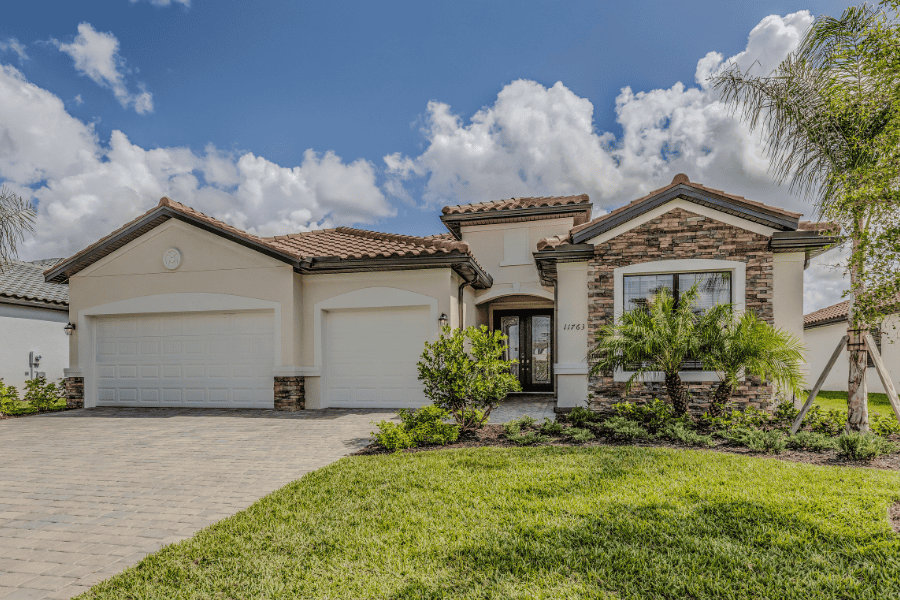
Drywood termites cause significant damage to homes and structures if left unprotected, causing millions of dollars in repairs. Unlike their counterpart, the subterranean termite, drywood termites live entirely within the wood they infest, making them challenging to control. Luckily, there are several effective drywood termite treatment options available to Florida residents to eliminate and prevent these pests! Let’s explore these treatment options.
Fumigation involves tenting an entire structure and utilizing gas to penetrate the wood and eliminate termites. This method can be highly effective at eradicating termites, eliminating any that are present on the property. Fumigation is also known to treat large termite infestations throughout an entire structure. Fumigation does require the occupants to vacate the property for several days.
Professional termite experts will directly inject an advanced, non-repellent product into drywood termite galleries to eliminate the termites found in a home. The no-tent treatment is slow acting, which allows termites who encounter the product to take it back to the queen and colony to eliminate it. This method is a great alternative to the fumigation method if you would rather avoid leaving your home.
The best way to ensure that you don’t end up with a drywood termite invasion is to deter them away from your home in the first place. Check out our DIY tips to preventing drywood termites:
While these tips will support efforts to deter termites, if you notice termite activity on your property, it’s best to call a termite control company near you to start termite control treatments and schedule an annual termite inspection to prevent future infestations.
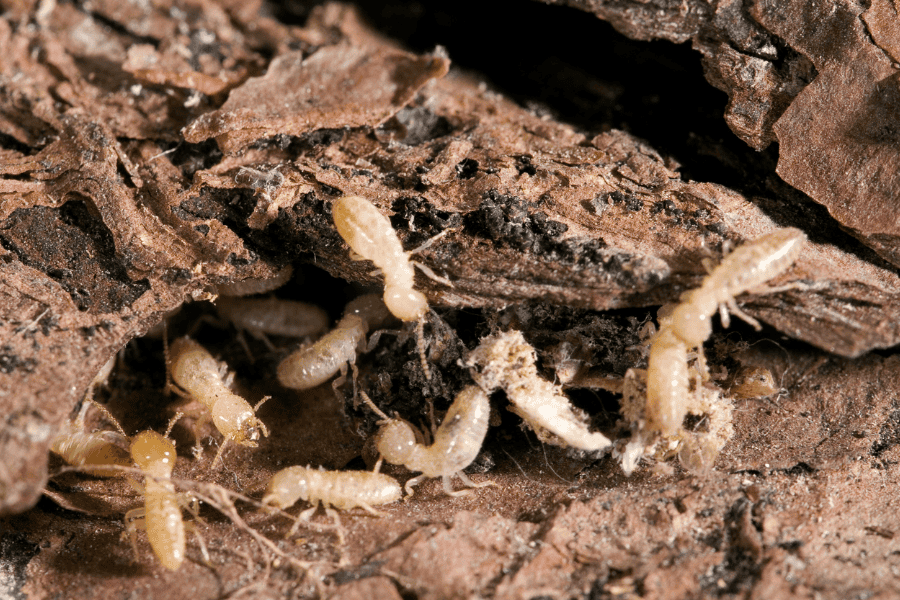
There are two common termite species Florida homeowners should know: the subterranean and drywood termite. Both termite species can cause structural damage to homes and cause thousands of dollars in repairs. One of the best ways you can avoid their damage is understanding their characteristics and the preventative measures to place around your home to deter them away. Let’s explore the differences between drywood vs subterranean termites and how you keep them from infesting your home.
Drywood termites thrive in dry wood, often infesting furniture, frames, and other wooden structures without them needing contact with soil. Once they have infested, they will cause damage by hollowing out wood from the inside out. A good indication that these termites infested your home is finding small piles of wood pellets or frass, tiny holes in wood surfaces, and discarded wings near windowsills or light fixtures.
Subterranean termites live underground and build mud tubes to reach food sources above the ground, often destroying foundations and support beams in the process. These termites need soil and moisture to survive and build their colonies. Signs of a subterranean termite infestation include finding discarded wings and mud tubes on exterior walls, foundations, or crawlspaces.
There are several preventative measures you can utilize to deter termites away from your Florida property. Let’s review do-it-yourself termite prevention tips:
While these tips will support efforts to deter termites away, it is always best to schedule an annual termite inspection with a professional termite control company near you. These professionals can detect termite signs early and quickly provide your home with the appropriate termite control and prevention plan.
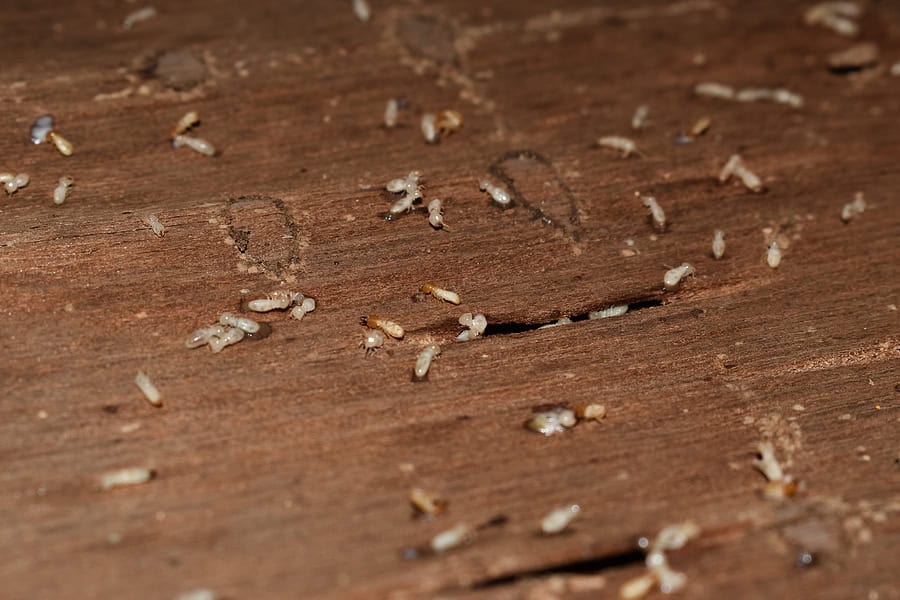
Termites thrive in warmer weather and are known to create extensive damage to your home if not managed properly. This makes Florida’s warm and humid climate a hotspot for termite activity! In our sunshine state, the most common types of termites are drywood and subterranean termites. Let’s breakdown the difference between these two termite species and how you can prevent these pests from infesting your home.
It’s important to understand the difference between drywood termites and subterranean termites to properly treat and prevent them.
There are several do-it-yourself prevention tips that you can utilize to prevent both drywood and subterranean termites. Consider the following:

Subterranean termites will go undetected and cause severe damage to Florida homes. While there are several species of termites, subterranean termites are one of the most popular species found in areas of Florida. We breakdown what you should know about these termites and how you can prevent them from infesting your home.
Subterranean termites need a water source and soil to survive and form their colonies. These termites create mud tubes to travel back and forth between your home and their nest. These tubes protect them from damage and predators, and allow them to accumulate moisture for survival.
Subterranean termites are active year-round, with swarmers being the earliest sign of their activity. Termite swarming season in Florida can start as early as February and run all the way until June. Spotting swarmers around your home is the first indication that a termite colony is present nearby, and another one could be starting up soon.
Subterranean termites will stay hidden within wood and underground within their colony. Their mud tubes will protect them and allow them to stay hidden when traveling back from their nest to your home. These mud tubes are typically about the size of a pencil and can be on ceilings, walls, exterior surfaces, and on the sides of slabs.
Since these colonies stay hidden, it can be very difficult to detect them, allowing them to cause extensive damage to homes. Many termite infestations can go unnoticed until it’s too late for early treatment before their damage is done. In the United States, termites are known to cause over $5 billion in damage to homes annually.
There are several preventative options that Florida homeowners should consider to prevent termite infestations. Several pest control companies provide varying techniques of termite management, including liquid barrier treatments and termite bait treatments, such as the Sentricon®️ Always Active Bait Station. These preventative measures also include annual inspections along with their treatments to provide you with the peace of mind that your home is always being protected from termites.
If you’re interested in termite control, reach out to a pest control company near you. These professionals will provide you with a thorough inspection and a customized treatment and prevention plan for your home.